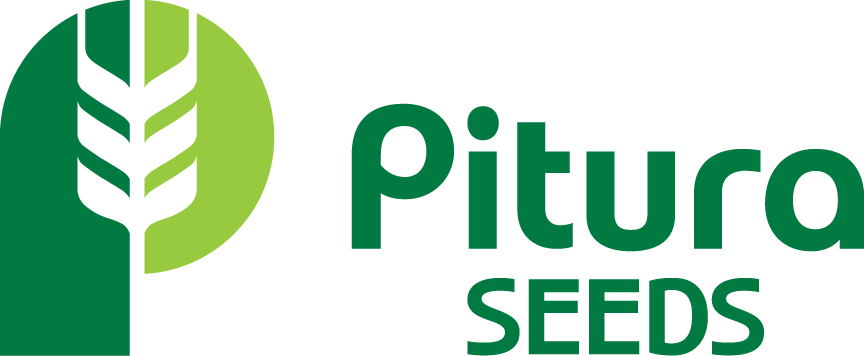High Risk For Fusarium Carry-Over Into 2025 - How Fusarium Impacts Seed Quality
Every year in July, spring wheat producers in Manitoba are watching out for one main thing– favourable conditions for Fusarium Head Blight (FHB) infection.
There are 2 main reasons to protect the crop against Fusarium infection:
1. Infected seed poses challenges for marketing grain.
2. Infected seed poses a threat to seed quality.
So, when July is warm (25-30C) and has consistent high humidity (>80% humidity within the crop canopy) while the wheat is heading out and beginning to flower, producers need to be proactive about protecting their wheat crop against disease.
Although grain with fusarium infected kernels causes immediate challenges for marketing the grain post-harvest, it is also important to think of the future impacts seed borne fusarium will have on crop year following a high disease pressure year.
Visibly diseased seeds (shrivelled or discolored) will be cleaned out when the lot is processed through a seed cleaning plant, especially those with color-sorting technology. However, seed that appears in good quality may still be carrying the fusarium pathogen. Furthermore, fusarium infected seed may still report high germination levels that would meet Certified No.1 standards (greater than or equal to 85% germination). So, even if the grain appears to be good quality and free of diseased kernels, it may not be fit to be used for seed in the year following a high disease pressure year.
In 2024 the majority of spring wheat in Central Manitoba came into flowering/anthesis stage during the beginning of July. The images below indicate that as July progressed, the whole province of Manitoba was experiencing high to very high risk of FHB infection.
Image 1 - Fusarium Head Blight Risk Maps for July 8, 2024 (left), July 15 (middle), and July 22 (right). The 3 weeks where majority of Spring Wheat in Central Manitoba would be at anthesis stage. https://prairiefhb.ca/map
The last time we saw this level of risk for FHB infection was in the 2016 growing season. See the tables below for a comparison of the July weather summaries from Winnipeg, MB for 2016 vs 2024.
Post-harvest 2016, 20/20 Seed Labs reported that 96% of wheat seed samples tested that year came back positive for some level of fusarium infection (ranging from 0-53% infection). With similar conditions being faced in July 2024, growers must be on high alert for carry-over of fusarium disease on their seed intended for next season.
Sowing spring wheat seed that is infected with fusarium species leads to poor emergence, seedling blight, and reduced tillering. There are 3 action items that can be taken to prevent seed-borne fusarium from affecting your next spring wheat crop.
1. Find a seed source with low fusarium species infection levels. Follow these test results as a guideline:
- Less than 1% infection = minimal to no concern for seed quality. 1-5% infection = highly recommend using a seed treatment. Greater than 5% infection = find a cleaner seed source.
- As producers of high pedigree seed, Pitura Seeds works closely with 20/20 Seed Labs Inc. for disease diagnostics on our seed production and will be sending all cereal seed lots for Fusarium graminearum and other disease testing.
2. Select a variety with a strong tolerance rating against Fusarium head blight
- Varieties with Moderate Resistance (MR) ratings against FHB will be more likely to fall in the category of minimal concern for carry-over on seed.
- Examples: AAC Hockley, AAC Brandon, AAC Starbuck VB.
3. Use a fungicide seed treatment on your spring wheat seed for spring 2025.
- Fungicide seed treatments are controlling the seed-borne pathogens that have carried over from the year on high infection and also provide protection from the pathogens that are present in the soil or residue.
The photo below is from spring 2017, following the high disease pressure season in 2016 and demonstrates the advantage of protecting seed with a seed treatment.
In-field effects: The seed planted in both wheat plots had 12 to 15 per cent fusarium infection, but the seed on the left was treated and the seed on the right was not. Photo: Holly Doerksen, Manitoba Agriculture.
As seed growers in a production area where Fusarium graminearum is established, we do everything we can to protect our seed and fields from becoming infected with fusarium species including crop rotation, seed treating, variety selection, and foliar fungicides.
If history repeats itself from 2016, growers will need to be more diligent than they have in nearly a decade in protecting their seed against fusarium seedling diseases with a combined use of a reputable seed source and fungicide seed treatments. For growers who do not typically use seed treatments in the spring, 2025 will be the year to utilize this tool for protection, regardless of spring conditions.
~Katie Meggison




